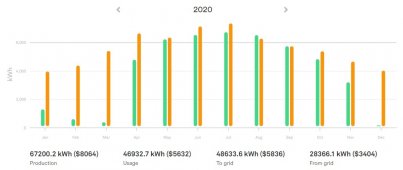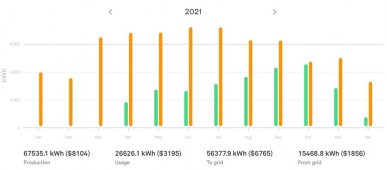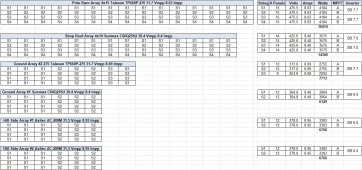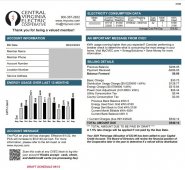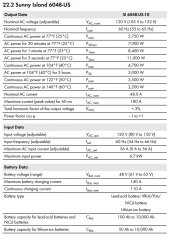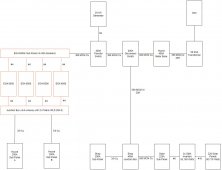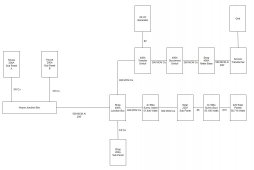Ah ok, I had my drawing above all messed up then. This would be more ideal I believe:
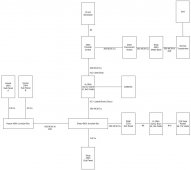
That way, the Shop and House sub-panels are going to take what they want before any excess solar production is pushed through the SIs back into the grid, so WAY less than 54A x 4. Too bad about the communications, but since the SIs regulate the frequency and that SBs sync to that to regulate the power, I should be fine, right?
I could always kill the breakers for some of the SBs if I loose power during the middle of a bright sunny day, so not produce an excessive amount of power that I can't consume. That would keep the frequency from going too high and maybe keep everybody happier?
I would add a load shedding relay to kill the PDUs hanging off the Shop sub-panel, so that in the event I lost power, the mining rigs would go down, which would account for 80-90% of the load at night.
The transfer switch is fully automatic and can be programmed to transfer source on its own, or be controlled externally. I can do generator warm up and cool down, set trigger points, etc:
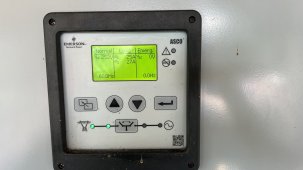
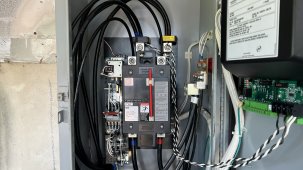
In my case, I'm not using any of those features, but instead controlling it from the controller on the generator, which is the DSE unit:

It has even more features and functions than the ASCO transfer switch. The main reason I got the DSE, it that particular unit has an Ethernet interface, so I can control from anywhere on my LAN, or via VPN from remote.
So I'm quite certain that between the generator and transfer switch, I can accommodate having the master SI control when the generator needs to run to replenish the batteries.
I agree that I would want to keep my grid connection unless the POCO and/or county inspector gives me a really hard time. I'm not too worried about the POCO, but if they require the new meter base to be inspected before they will connect the power, then I think I'll have issues.
Since I had 400A service at the shop building before, maybe they will let it slide. I'll see if I can chat with them and get a feel for what their expectations are. Perhaps one possibility would be to get a commercial account instead of a residential one, but I suspect the base meter charge will be much higher.
If I add East/West facing strings to my 7 unused MPPT inputs, you're saying I would be better off doing, say 12 facing East and 12 facing West parallel them up, and then connect to input A or B? In my current install with all 60 cell panels, I like to aim for 400V in each string to maximize efficiency.
So having 12E+12W in parallel on input A or B will be better than 12E and 12W on inputs C on 2 difference inverters?



